The attention lavished on the Pacific Coast Highway tends to focus on its route through California. While the allure is justified, the ultimate road trip is actually due north — along the coastal highways of Oregon and Washington. As you cruise northward, you’ll see towering rock formations protruding from the Pacific Ocean, mountains covered in evergreen forests, and moody beach coves graced by the sound of waves crashing or, in calmer seasons, the laughter of children playing on sand.
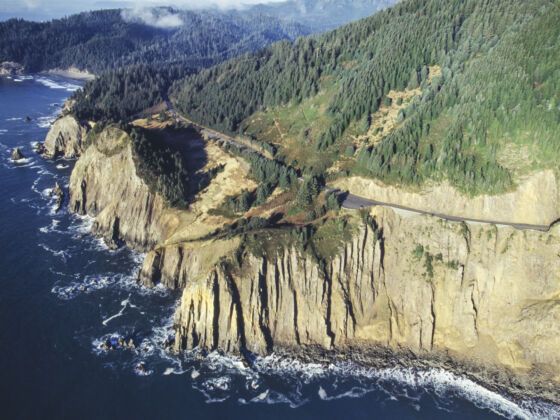

For the Ultimate Pacific Coast Road Trip, Go North to Oregon and Washington
The terrain is rugged and beautiful, the deep greens of moss-covered rock contrasting against the gray and brown sea stacks that were formed by coastal lava flows hardening and eroding over millions of years. As it passes through Oregon, Highway 101 is known as the Oregon Coast Highway, only to be redubbed the Pacific Coast Highway once you cross into Washington.
On your journey, you can visit the longest beach in the west, discover places to surf, hike, swim, or simply sightsee, and camp alongside the sound of the sea. The skies are famously overcast and, no matter the time of year, an inquiry about the weather anywhere en route is likely to be met with the word “chilly.” Embrace this, as it’s part of the experience, and everyone looks good in a windbreaker, anyhow. In addition to noted pull-outs, stop at — and camp near — these attractions.
Coos Bay, Oregon
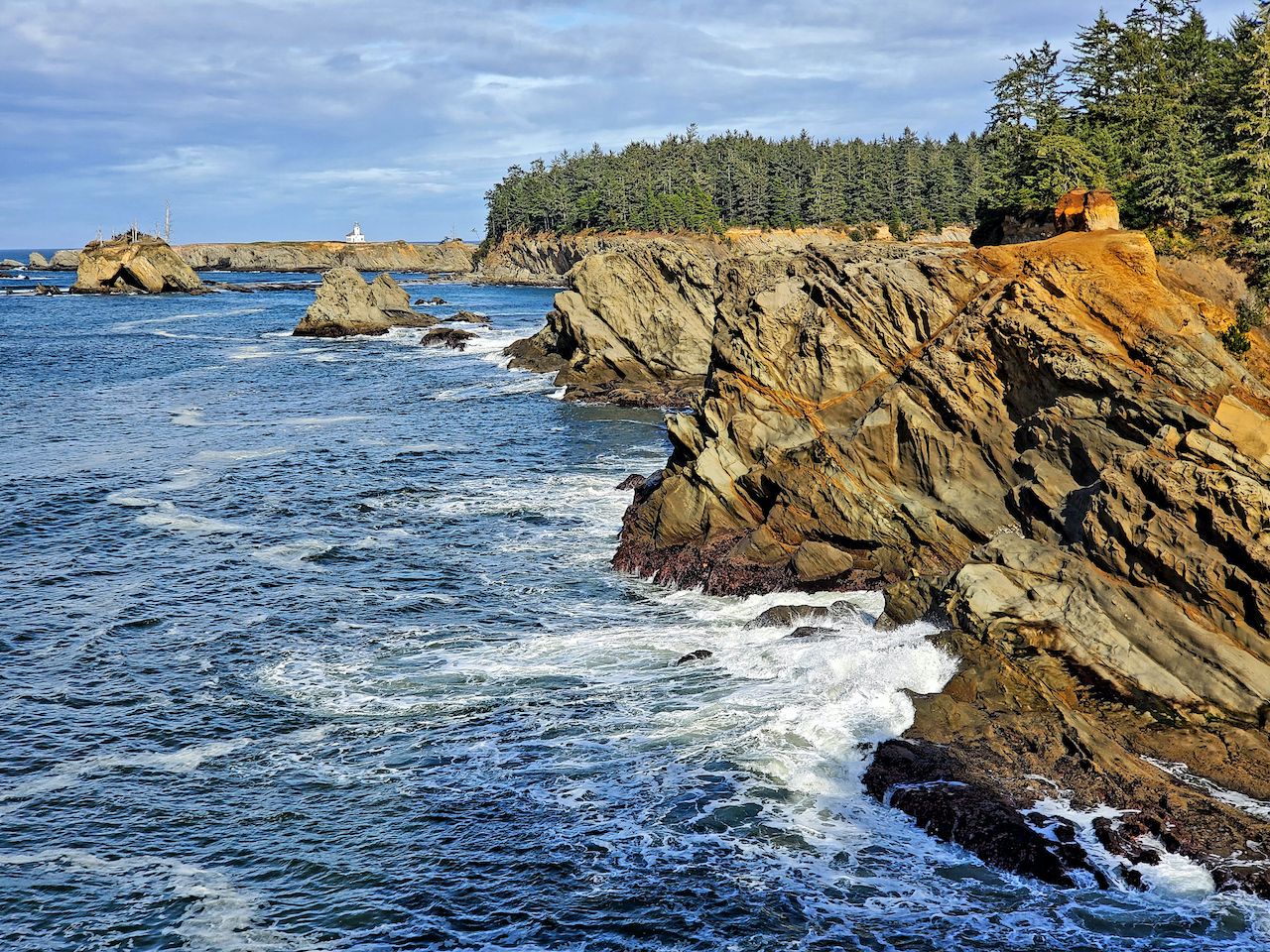
Photo: Trisha Mark/Shutterstock
Two and a half hours north of the California state line, Coos Bay is home to a trifecta of state parks begging for a hike, or at least to pose for your camera: Cape Arago, Shore Acres, and Sunset Bay state parks. Start at the latter and book a campsite here, online in advance, and make it a basecamp for your adventures in the area. From here, you can hike the trail through all three parks, stopping at clifftop overlooks and beaches along the way for picnics.
Nearby Shore Acres is home to a beautiful garden and secluded beach access points to Simpson Beach — not to be confused with the area’s Simpson Reef, where hardcore surfers brave a rocky entrance into a poweful wave. At the end of the trail and road out of Coos Bay, Cape Arago epitomizes the coastal experience in the Pacific Northwest, with its jagged rocks protruding from the water and views extending beyond into the mist. This is a popular lookout point for wildlife, including migrating whales and seals.
Florence, Oregon

Photo: Stas Moroz/Shutterstock
Florence, an hour north of Coos Bay, is defined by its massive pier, extending from the shore out of view into the hazy Pacific. Walking the pier is eerily fun, but the best thing to do in Florence is to check out the Sea Lion Caves, a privately owned wildlife preserve. This massive cave system extends through a series of caverns that give way to the ocean, and hosts large rafts of sea lions. Their calls echo through the caves. Make it all the way down to just above where the sea lions roost for a unique photo opp.
Downtown Florence is lined with souvenir shops and restaurants. Stop at 1285 Restobar for a rich plate of crab ravioli in lobster sauce or the Waterfront Depot for a cajun fish burger. Camping is available at Harbor Vista Campground and Park, a county park that can be reserved here, and South Jetty RV and Camping Resort.
Just north of town is Heceta Beach, a resort community and small town with expansive beach access. Worth stopping at on your way north to Lincoln Beach (or south, if traveling the opposite direction) is the Heceta Head Lighthouse, about 20 minutes north of Florence. The structure was built in the 1800s and is now a bed and breakfast, but a quick photo of the Pacific from the State Scenic Viewpoint or Conical Rock is enough to capture the experience.
Lincoln Beach and Rockaway Beach, Oregon
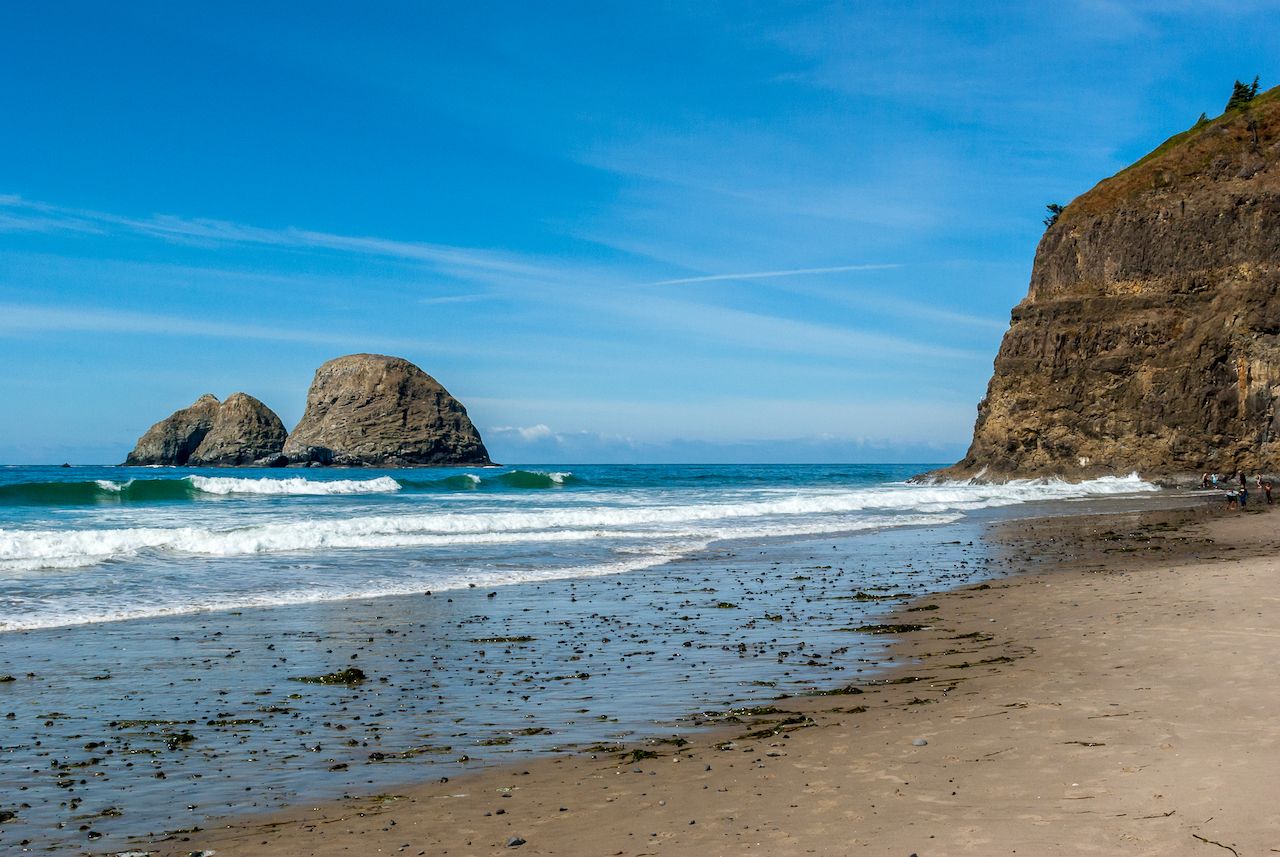
Photo: Ramblin Rod/Shutterstock
Maybe The Ramones were really singing about Oregon, not New York’s Rockaway Beach, in their 1977 classic of the same name. Whether or not that’s true, the West Coast’s Rockaway is “not hard, not far to reach,” and neither is Lincoln Beach — four hours and two-and-a-half hours north of Coos Bay, respectively. The former is an iconic Oregonian tourist stop, a tiny town with surfable waves year-round (bring a 5/4mm wetsuit) and a row of old beach motels that stand as a throwback to the era of “Endless Summer,” even if that summer was endlessly chilly up here on the Oregon coast. Camp at Barview Jetty Park or one of the numerous RV campgrounds on Highway 101.
Lincoln Beach is home to Fishing Rock State Recreation Site, one of the best spots for whale watching on the Pacific coast. If you don’t see whales at Fishing Rock, head a few minutes south of town to Boiler Bay State Scenic Viewpoint (known to locals as Brigg’s Landing) and try again — this time from higher up on the moss-covered rock and with the eerie vibes of a ghost ship surrounding you. In 1917, the steamship J. Marhoffer crashed into the rocks here, catching fire and firmly embedding the spot into local legend. Several RV resorts are located along the highway, or visit Hipcamp to reserve a private campsite along the coast or further inland in the forest.
Before you cross into Washington via the Astoria Bridge, stop in Astoria to check out the 125-foot Astoria Column on Coxcomb Hill and again to take at least a few photos of the Columbia River at its most vast and Mississippi-esque just before it dumps into the Pacific. Your next stop is just across the state line.
Cape Disappointment State Park
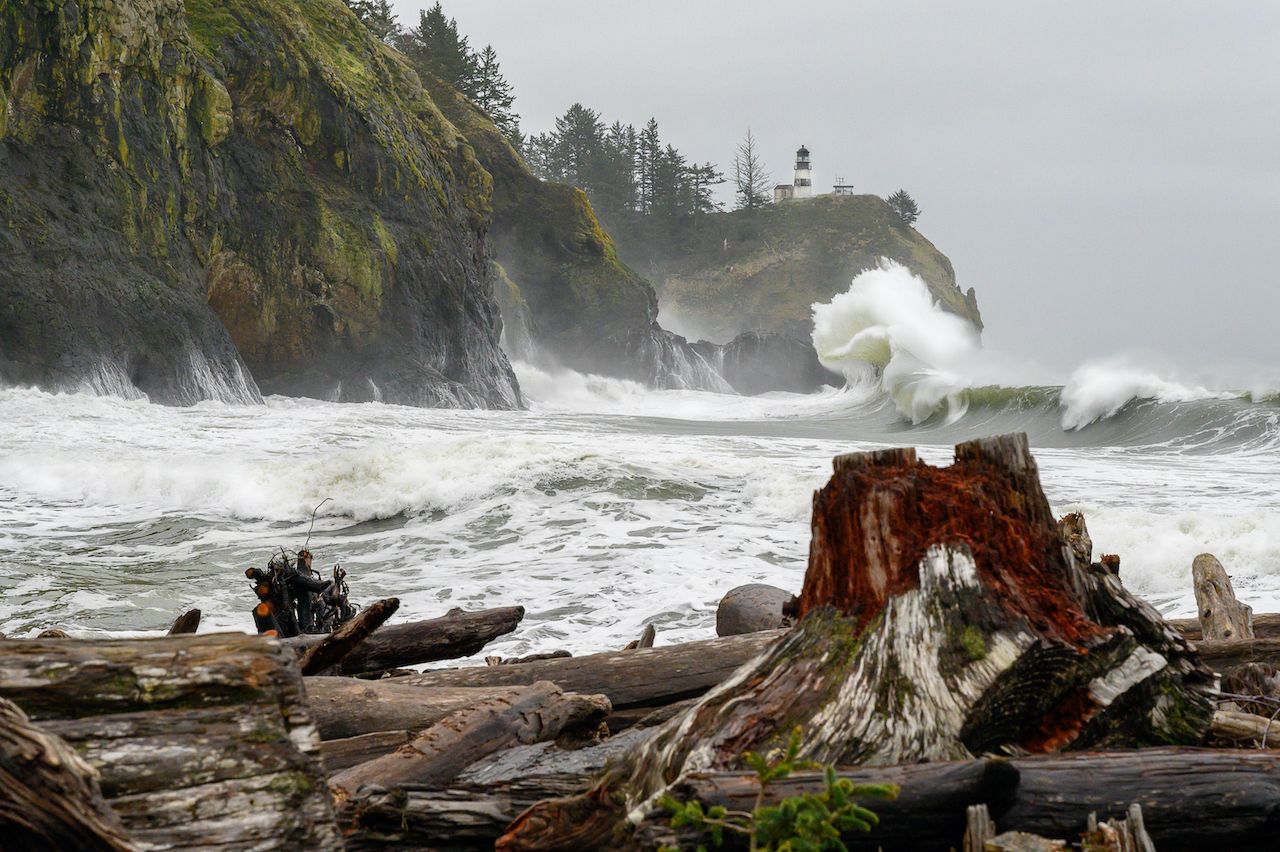
Photo: JasonRenfrow/Shutterstock
Captain John Mears so thoroughly struggled to find the Columbia River in the 1700s that an entire location was dedicated to commemorating his misery. That place is Cape Disappointment State Park, now a much more joyous spot to enjoy hikes, view some lighthouses, and generally welcome yourself to the Evergreen State. Towering waves crash into the rocks here, perhaps a contributing factor in the Columbia River’s mouth being so hard to enter via ship. If you wish to stay overnight, there are 137 campsites located on site. If continuing on, stop for long enough to take a good stroll at Long Beach, a quick drive north of Cape Disappointment. This 28-mile stretch of beach is the longest on the West Coast, hence its name.
Grays Harbor, Washington
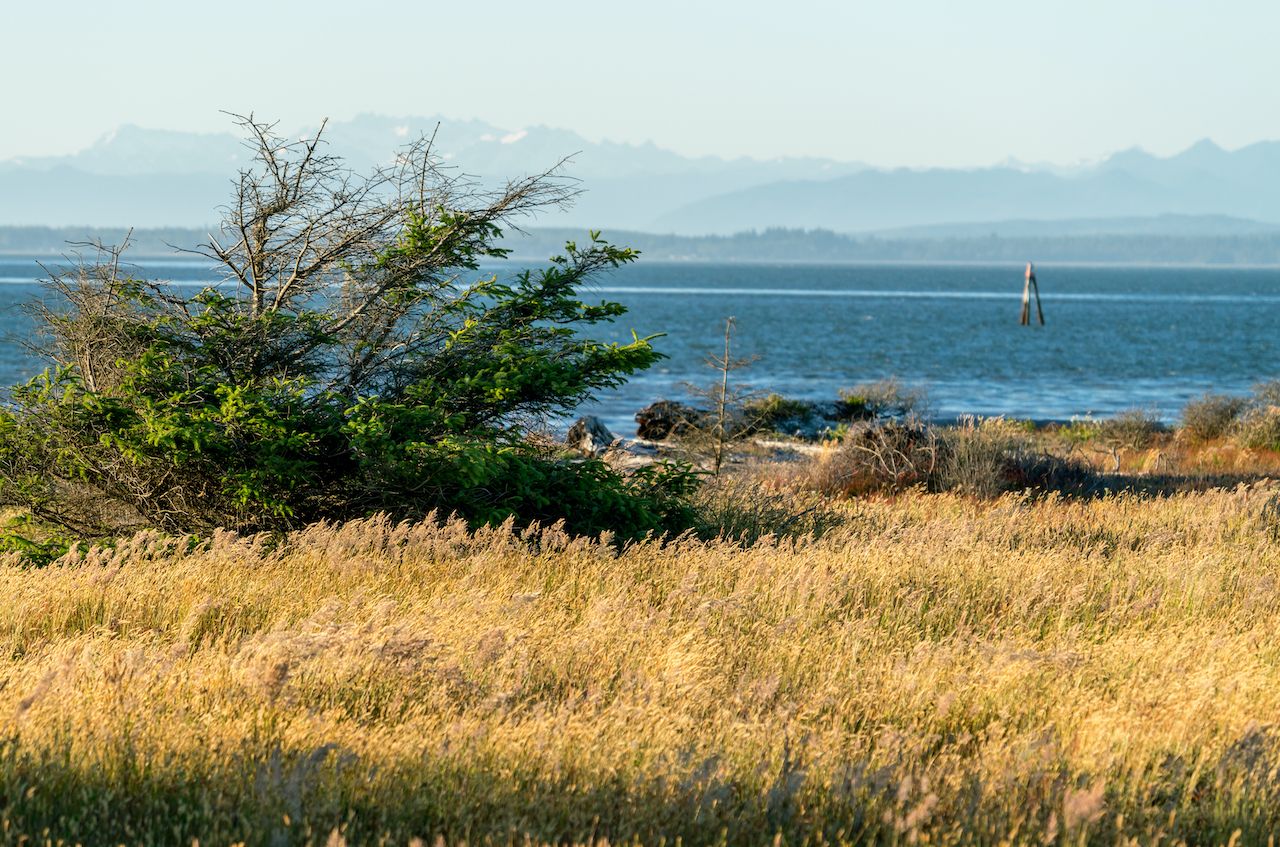
Photo: John T Callery/Shutterstock
Encapsulating an entire county, Grays Harbor is worthy of at least a night or two on your drive north. Many beaches are available for swimming, fishing, and lounging, including Copalis Beach, Damon Point, and Ocean Shores Beach. If fishing (or eating ultra-fresh seafood) is your jam, head to the town of Westport on the south side of the harbor. Here, coastal culture shines in all its glory. Fishing boats line the dock, and the restaurants a stone’s throw away serve that day’s catch in all its incarnations. If visiting in May, sign up for a whale watching tour, as more than 20,000 gray whales pass by less than a mile from shore.
Finish at Olympic National Park
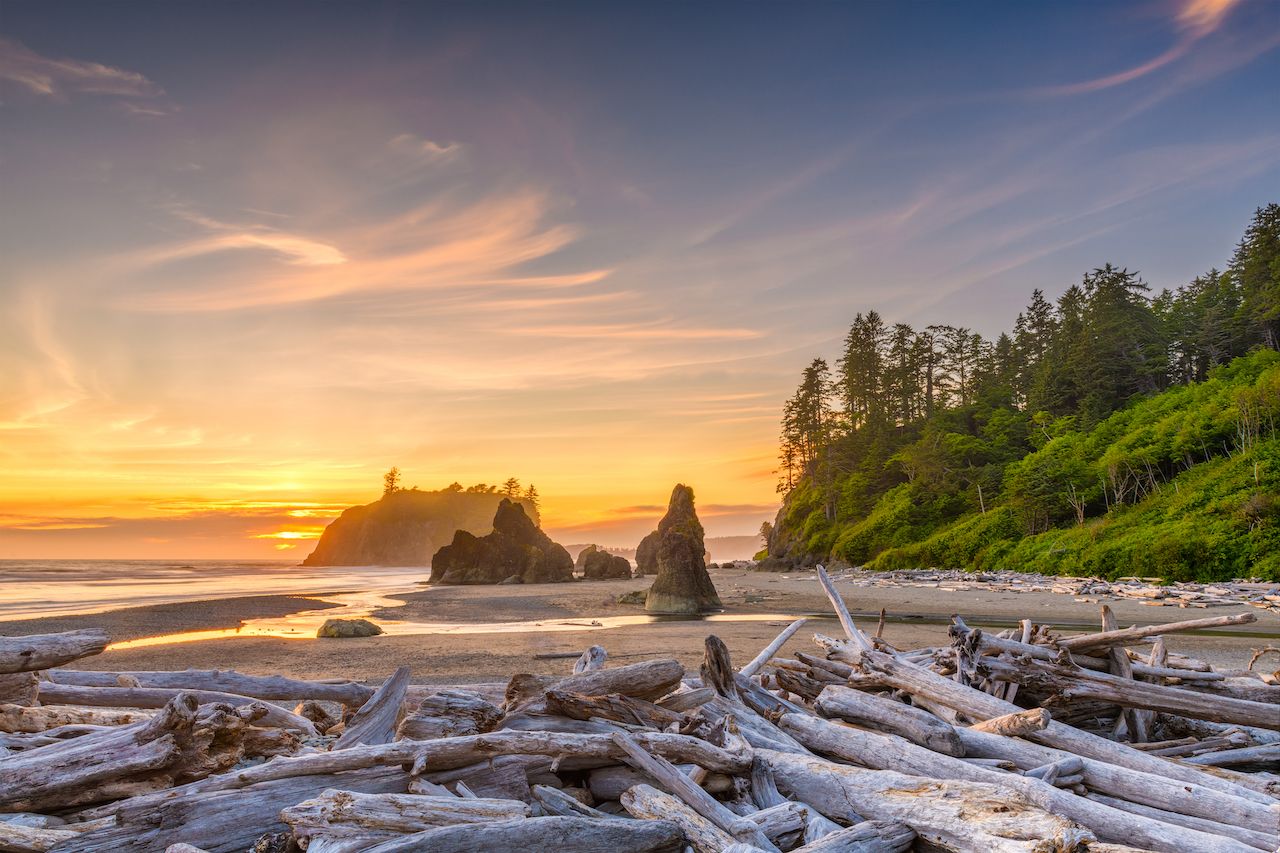
Photo: Sean Pavone/Shutterstock
The most popular attraction on and near the Washington coast is Olympic National Park, where the Hoh Rain Forest, which gets 140 inches of annual rainfall, stuns visitors with its bright green moss-covered trees. The park is also home to massive Mount Olympus, which rises 7,980 feet, and popular hiking destinations like Hurricane Ridge, among several other stunning trails.
Less known to many is that the massive, 1,440-square-mile park also includes a separate, stunning 73-mile-long oceanside stretch of the Olympic Peninsula. Here, Ruby Beach is a lovely stop before venturing inland to the main section of the park. Even before you reach Ruby Beach, be sure to stop at the Kalaloch Tree Root Cave, living proof of the rainforest’s refusal to succumb to the powers of the ocean. Here, a massive tree root forms an enterable cave where the forest and sea meet head-on. Camp in the adjacent parking lot and watch the sunset over the Pacific Ocean — a fitting end to a picture-perfect journey.